
Meteors are more commonly seen between midnight and dawn than between dusk and midnight. Why?

Meteors are more commonly seen between midnight and dawn than between dusk and midnight. Why?
In 1653, Blaise Pascal composed a triangular array in which the number in each cell is the sum of the two directly above it:
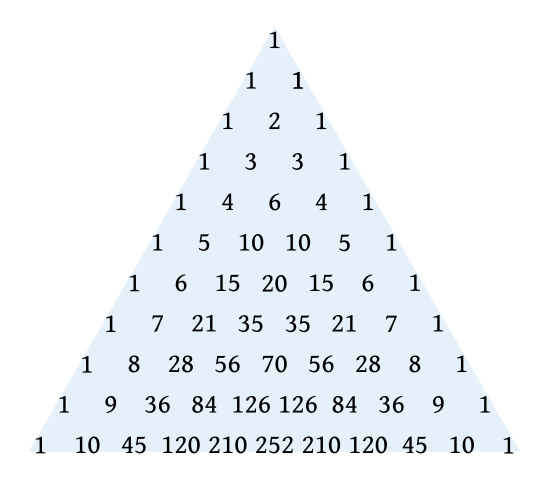
In 1915, Polish mathematician Waclaw Sierpinski described an equilateral triangle in which the central fourth is removed and the same procedure is applied to all the succeeding smaller triangles. Perplexingly, the resulting structure has zero area:
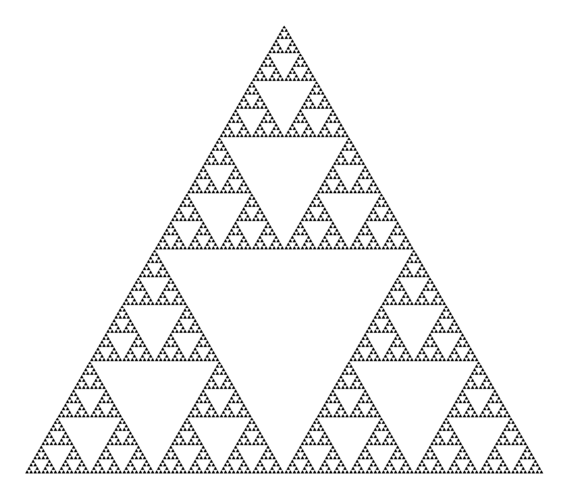
Interestingly, if the odd numbers in Pascal’s triangle are shaded, they produce an approximation to Sierpinski’s triangle:
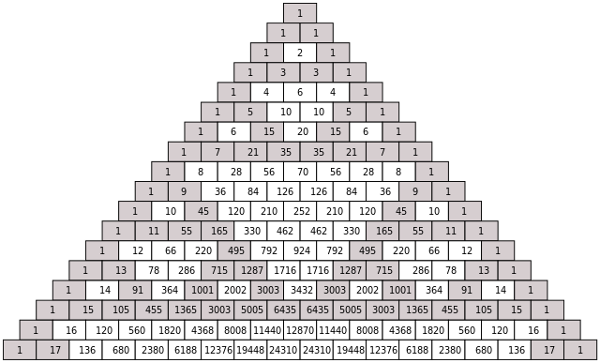
And as this triangle grows toward infinity, it becomes Sierpinski’s triangle — an arrangement of numbers that takes the shape of a geometrical object.
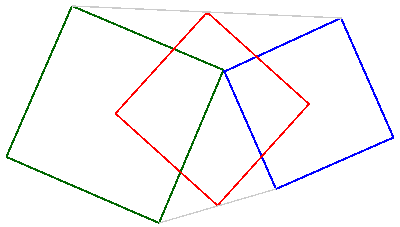
If two squares share a common vertex, then the centers of the squares and the midpoints of the linking segments shown form another square.
Discovered by mathematicians Paul Finsler and Hugo Hadwiger.
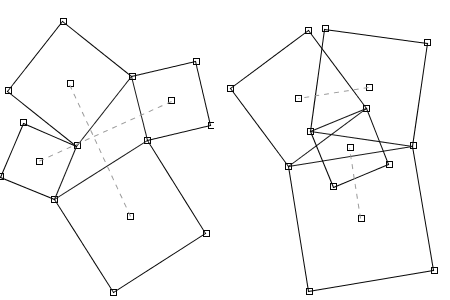
Draw any quadrilateral and build a square on each of its sides.
Connect the centers of opposite squares, and these two line segments will be perpendicular and of equal length.
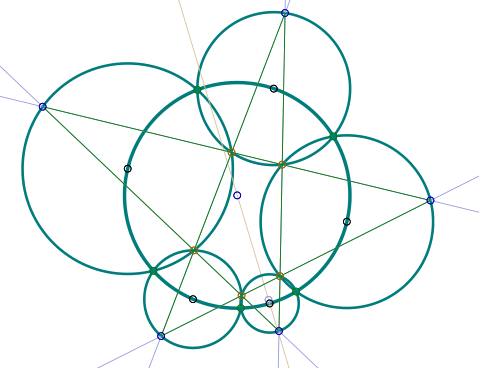
If the centers of five circles lie along the circumference of a sixth so that they overlap like the links of a chain, and if each intersects its neighbor on the sixth circle as well, then drawing lines as shown through the remaining intersections will form a pentagram whose points lie on the five circles.
A 19th-century schoolchild defined a circle as “a round straight line with a hole in the middle.”
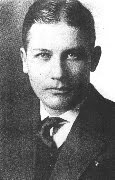
Entomologist Alexandre Girault expressed himself in his work. Of the 500 genera he named, many honored artists, poets, and writers whom he admired: Davincia, Shakespearia, Beethovena, Mozartella, Emersonia, Raphaelana, Ovidia, Goetheana, Thoreauella, Tennysoniana, Bachiana, Keatsia, Plutarchia, Schilleria, Aeschylia, Aligheria, Thalesanna, Rubensteina, Carlyleia, Herodotia, Cowperella, and Froudeana.
To mock his supervisor Johann Illingworth, he invented a parasitic mymarid wasp, Shillingsworthia shillingsworthi, which he described as an ephemeral creature lacking a head, abdomen, or mandibles and found only in “the chasms of Jupiter” — in other words, a nonentity. He called it “an airy species whose flight cannot be followed except by the winged mind.”
He understood even women through entomology — one of his privately printed works describes a new species of human, Homo perniciosus, known only from the female sex:
Abnormal female (loveless, without offspring); heart functionless; mammae aborted; psychology novel (as supposed) but artificial; gay, high-coloured, feral, brass-cheeked, shape lovely like Woman but nature hard (selfless, thoughtless, proud, unsympathetic, irresponsible, aggressive, irritant, insensible, luxurious, pugnacious, over-active, inquisitive, mischievous, voracious and even carnivorous; antagonistic, ungentle, immodest, critical, competitive, poisonous); conduct unstable (even inclined to treachery), the lips compressed, body strong. Everywhere but rare in natural habitat.
He was prickly, but he was dedicated — he published much of his work at his own expense, and many of his type specimens are retained today by the Queensland Museum. “Research is a labour of love,” he wrote. “Strange then to find it all done nowadays as a labour of wages! Must love, too, be a matter of cash?”
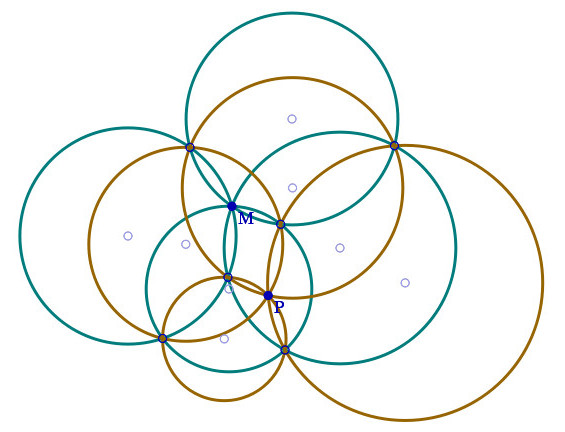
Let four circles (blue) pass through a single point, M. Each pair of these circles intersect at a second point (pink). Each three of the four blue circles will have three pink points among them; these trios of pink points define four new circles (brown), which intersect in a single point, P.
If we start with five circles passing through a single point M, then we can apply the procedure above to each subset of four of them. This will produce five points P that all lie on a single circle.
If we start with six circles that all pass through a single point M, then each subset of five of them defines a new circle, as we’ve just seen. These six new circles all pass through a single point.
Remarkably, this pattern continues forever. It was discovered by the English geometer William Kingdon Clifford.

Arrange cards with values ace through 9 in a row, in counting order, with the ace on the left.
Take up a card from one end of the row — left or right, your choice.
Do this twice more, each time taking up either the leftmost or the rightmost card in the remaining row.
When you have three cards, add their values, divide the total by six, and call the result n. Count the cards that remain on the table from left to right.
The card in the nth position will be the 4.
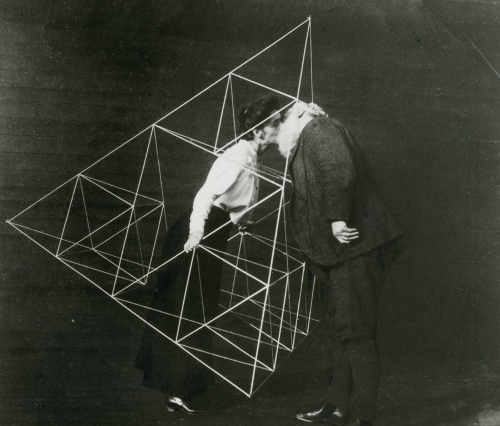
Alexander Graham Bell kisses his daughter Daisy inside a tetrahedral kite, October 1903.
Bang’s theorem holds that the faces of a tetrahedron all have the same perimeter only if they’re congruent triangles. Also, if they all have the same area, then they’re congruent triangles.
Buckminster Fuller proposed establishing a floating tetrahedron in San Francisco Bay called Triton City (below). It would have been assembled from modules, starting with a floating “neighborhood” of 5,000 residents, with an elementary school, a supermarket and a few specialty shops. Three to six neighborhoods would form a town, and three to seven towns would form a city. At each stage the corresponding infrastructure would be added: schools, civic facilities, government offices, and industry. A full-sized city might accommodate 100,000 people in a single building. He envisioned an even larger tetrahedron, with a million citizens, for Tokyo Bay.
The moral of Fuller’s 1975 book Synergetics was “Dare to be naïve.”
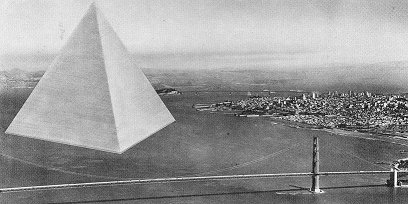
The square root of 2 is 1.41421356237 … Multiply this successively by 1, by 2, by 3, and so on, writing down each result without its fractional part:
![]()
Beneath this, make a list of the numbers that are missing from the first sequence:

The difference between the upper and lower numbers in these pairs is 2, 4, 6, 8 …
From Roland Sprague, Recreations in Mathematics, 1963.